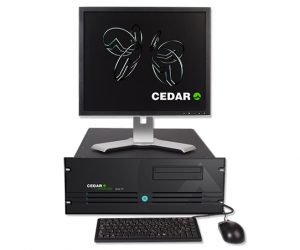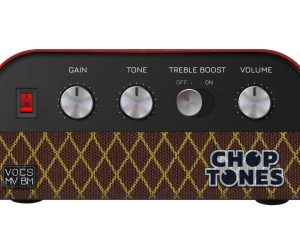
Take It To The Bridge
Sound for the Sydney Harbour Bridge’s 75th birthday. The world’s most famous bridge celebrated its 75th in style, laying on a street party for 200,000 of its closest friends. And, like any good party, a great sound system and music collection had a crucial role to play.
Text: Luke Kungl
It’s a clever way of celebrating the birthday of one of the world’s most recognisable landmarks – by effectively shutting it down. That’s right, the Sydney Harbour Bridge was closed to traffic for a day. In fact, it was the longest that the bridge had gone without cars and trains for its entire life. Of course, this was of little comfort to sound designer George Gorga and Jands Production Services, who had been granted a matter of hours to set up a soundscape loudspeaker broadcast system along the entire length of the bridge. And talk about high-pressure gigs, this one was right up there – governors, premiers, and various other ‘excellencies’ and ‘eminences’, along with the usual list of reality TV show winners, and morning telly presenters who were all flashing their pearly whites to the resident media throng. So were there a few nerves at the production nerve centre? Probably. Were they well prepared? Naturally.
The evening before, 450 metres of road beneath the Harbour Bridge had been handed over to the Jands crew for a full-scale tech rehearsal. Nine semi-trailer flatbeds along with George Gorga’s mighty control bus were pre-rigged and idling, ready to roll in like the 9th Armoured Division.
Come 11:30pm and Lane One was closed for the trucks to get into position and unhook. However, it wasn’t until 2am when the adjacent lane was closed that any crew were allowed to work on foot. After all, one of the big day’s main events was to unveil a plaque in honour of those who’d died working on the harbour bridge construction, and it would have been awkward to get the plaque re-engraved at such short notice!
BLUE RIBBON EVENT
Sunday morning, March 18, and NSW governor Marie Bashir snipped the ribbon using the same scissors employed by Jack Lang 75 years before, and there was much rejoicing… because the co-planar, phase-coherent, line source PA was streets ahead of the 1932 sound!
Actually, those present didn’t pay much attention to the quality of the sound reinforcement during the latest official ceremony, or the soundscape along its length; they simply enjoyed the immersive effect of it – a good measure of how well the PA was set up.
The audio experience that walkers enjoyed went roughly as follows:
At the northern end of the ‘Coathanger’, the day began with the opening ceremony, complete with dignitaries, a specially-commissioned original musical work by composer Elena kats-Chernin (well-known for her musical contributions to the Sydney 2000 Olympic Games and 2003 Rugby World Cup openings) and the mandatory singing of the Australian national dirge, replete with choir. This was reinforced using a self-contained L-Acoustics V-DOSC PA hung from a ground-supported flying system and local control, expertly tended by JPS’s Dean Lovell.
Heading south, punters walked through sequential decades of the bridge’s history. Soundscape composer Anton Marsted had compiled sonic collages capturing significant audio moments from each of these eras. Famous songs, jingles, speeches, news items and the like, lifted from miles of historic audio resources, kept smiles on walkers’ faces and a spring in their step.
Stretching across the end of the arch was a sound installation of wind chimes. Just in case the day arrived sans any breeze, the sound-artwork was pre-recorded and replayed through a concealed reinforcement system. The capture and replay was very thoughtfully realised, and blended seamlessly when the breeze did pick up. Had I not been told it was pre-recorded I wouldn’t have twigged.
Towards the end of the day there was a traditional Aboriginal smoking ceremony with an original musical composition by David Page accompanied by a tanker-load of dry ice.
A little way down the hill was another self-contained PA system for the opening of the aforementioned commemorative plaque of doom.




A-BRIDGED VERSION
The realisation of the concept fell to composer/producer George Gorga (who’s the sound designer for the premier’s department) assisted by Glen Rhodes, and system engineer gurus Greg Rosman and Nick Giameos from JPS.
Coverage was achieved thanks to the use of a series of flatbed trailers with ground-stacked V-DOSC clusters strapped on top. Each truck had two stacks, one firing north, the other south, creating an area of coverage between itself and the stack on the next truck in front or behind.
Power was generated on each truck where required via a 45kVA generator, which provided more than enough juice. The plan was that each truck should have enough power not only for its own requirements but that of the trailer on either side of it as well. Each truck had cable ready to go should the generator of any of its neighbours fail.
Each ‘module’ comprised three L-Acoustics V-DOSC elements and two L-Acoustics SB218 subs strapped together along with attendant Crown amps and BSS processing. Each near-identical trailer therefore had its gen-set in the middle and a PA module at each end at roughly 45º. Come the wee small hours of the morning, the pre-rigged, pre-tested convoy of PA trailers required only signal runs to hook it all together and make it go. In keeping with JPS’s analogue multicore philosophy, all signal runs were via Belden cores (run in duplicate). The entire length of Lane One was closed to the public so it would have needed to be a pretty bizarre comedy of errors/tragedies for any damage to occur to the long line of gear.
MIX BUS OUTPUT
Smack in the middle of the bridge sat an unassuming and ageing white bus – the only clue to the oblivious passer-by that what they were hearing was more than an iPod on repeat.
Anton’s nine-track soundscape composition (eight ‘decades’ of sound, plus the wind-chime installation) were, in essence, nine independent five- to seven-minute segments. These were all looped and played back from a Pyramix DAW. This ran via ADAT lightpipe digitally into a Yamaha PM5D and routed discretely to nine outputs for each zone (eventually splitting to half of one truck and the next half of the next to create each coverage area).
The same audio playback was running concurrently from a nine-track Nuendo session, also into the Yamaha, which was configured for a one-button flip between playback sources.
There are very few occasions where a catastrophic error will occur with a Yamaha PM5D, but, all the same, sitting next to this console was a Midas Verona 400 backup console. This had splits of the Nuendo playback. And if all that wasn’t enough redundancy, the program material was also backed up and playing back on a Roland VS1680 eight-track (with a looped CD player for the ninth track of bells!) – although this was only running into the Midas.
The nine outputs from each of the two consoles ran into a Jands custom A-B noiseless relay switcher, from there into a bank of 12 TC Electronic 1128 EQ/processors. These led to a series of transformer-isolated balanced line drivers and out in each direction up the bridge to the truck beds and then, in turn, to the localised BSS loudspeaker processors.
In addition, two 360 Systems Instant Replay units, and a CD player were employed for the playback of audio for the smoking ceremony that evening. Again, source material enjoyed two sets of redundancy.
The entire length of Lane One was closed to the public so it would have needed to be a pretty bizarre comedy of errors/tragedies for any damage to occur to the long line of gear


BACK TO BACKUPS
In keeping with the theme of backing up your backups, every major control device in the bus was running on dual power supplies and UPS units. These were configured to give emergency power to the critical control gear long enough to grab power from the next available power source – in this case a generator on one of the neighbouring trucks.
At each end of the bus were the day’s other critical areas of importance – snack food stores at the front, and the snooze-ready business mattress at the back. After all, they needed to be fresh enough to get the whole thing off the bridge in far less time than they had to get it set – Monday morning peak hour traffic waits for no one.
MERGING INTO THE RIGHT LANE
The outcome of all this planning was profound. The decision to use the V-DOSC system was not merely because JPS wanted to show it off to the thousands of passers by, but because of its sonic excellence and accurate 90º horizontal coverage pattern. Greg Rosman noted: “If we used a 120º pattern box we’d have had interference from zone to zone, and the concept wouldn’t have worked at all.”
Given that there were eight or nine different areas with different program constantly running, accurately isolated coverage was one of the most important factors JPS considered – otherwise, things would have been rather busy and confusing to listen to.
The smooth SPL coverage of the system and smooth transition from one area of coverage to the next meant that wherever the revellers were they were completely immersed in that particular decade. There was substantial acoustical energy present (important when Billy Thorpe kicks in, for instance) but not trying on the ears. Each PA stack needed to cover six lanes of the bridge’s width, and about 40m of the deck’s length in partnership with its neighbour on the next truck. This was easily achieved, and the bridge thus became a smooth aural journey from start to finish.
There was also a wide range in the quality of the source material to deal with when preparing for the event. This was due to the age and recording methods of the times – some of the original material of course being many decades old. These differences could have been far more apparent, and lacked clarity, were it not for the obvious commitment to quality right through the process from composition, editing, to final sound reinforcement.
Of course, any outdoor system needs to be prepared for rain. The PA cabinets all angled downward and could handle a bit of wet stuff, and with all the control gear strapped together inside the comfy bus, only the amp racks needed protection. Thankfully for all concerned, the day was as sunny and happy as the crew. (And if you believe that, I’ve got a bridge to sell you…)
















RESPONSES